The United States Coast Guard is unique among the country's six armed services.1 Unlike the other services, it is part of the Department of Homeland Security, and its missions range from maritime law enforcement to search and rescue to port security to setting and enforcing regulations on ships to environmental protection and even maintenance of navigation aids. All of this requires what is usually credited as being the world's 12th-largest navy,2 with 40,000 military and 10,000 civilian personnel, 259 cutters,3 200 aircraft of various types and 1,600 boats.
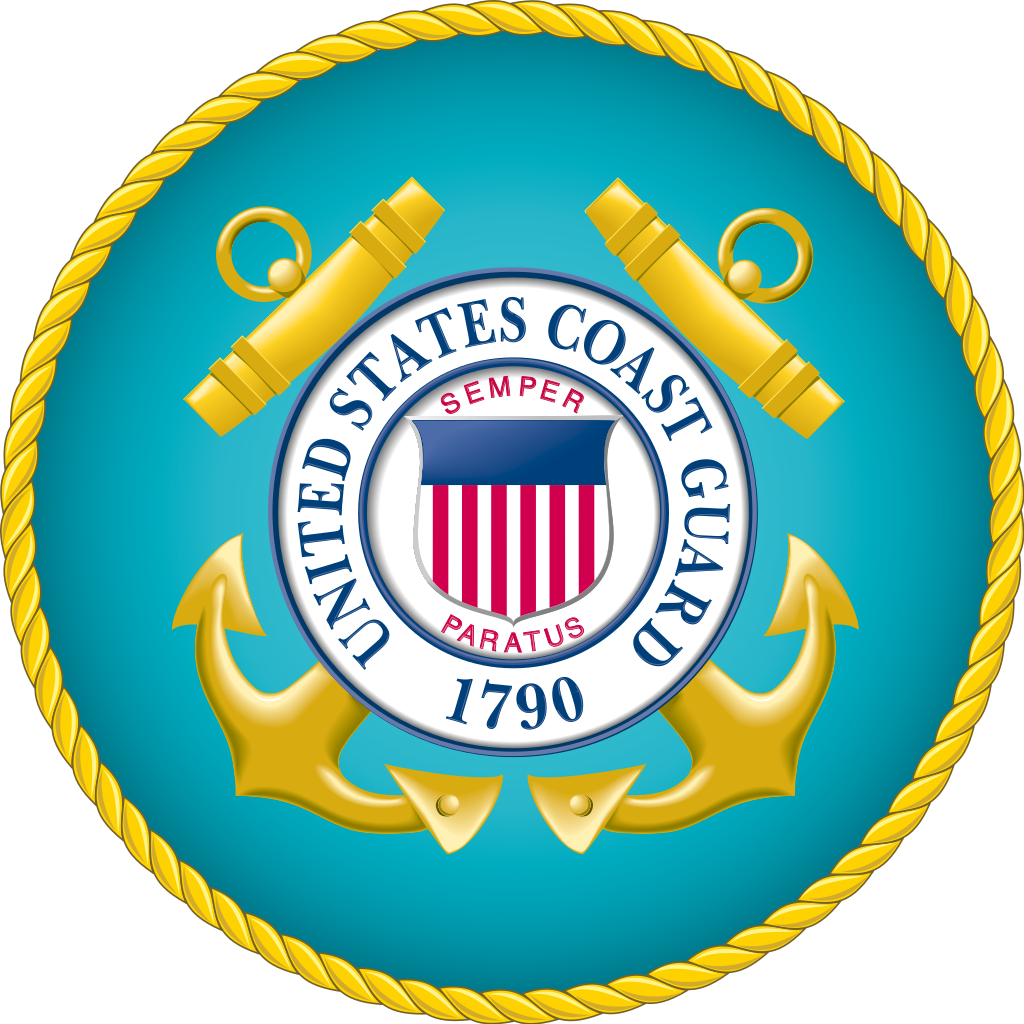
The Coast Guard's origins go back to 1790, when Alexander Hamilton established the Revenue Marine to clamp down on smuggling, raising the tariff revenue that would support the new government. At the time, it was the only armed maritime force available to the United States, as the Navy had been disbanded and wouldn't be reestablished until 1798. The Revenue cutters were placed under Naval command during the War of 1812, as they have been in every American war since then, serving with distinction. The 19th century saw them fight pirates in the Gulf of Mexico, interdict the illegal slave trade and serve with the Union in the Civil War. It also saw the formation of a second organization, the United States Life-Saving Service, tasked with rescuing mariners in distress along the coasts. In 1915, the two organizations were merged to form the United States Coast Guard.
The new Coast Guard's baptism of fire came in WWI, when its personnel and ships joined the battle against the U-boats. In the interwar years, it fought rum-runners and took responsibility for maintaining the nation's lighthouses. WWII brought a massive expansion, with the Coast Guard providing crews for dozens of frigates, destroyer escorts, troop transports and landing ships. Coast Guard coxswains delivered men to beaches around the world, while their fellows continued the Coast Guard tradition of rescuing those in distress at sea, whatever the cause. The war also saw the Coast Guard take over responsibility for safety regulations on merchant ships and the licensing of civilian mariners.
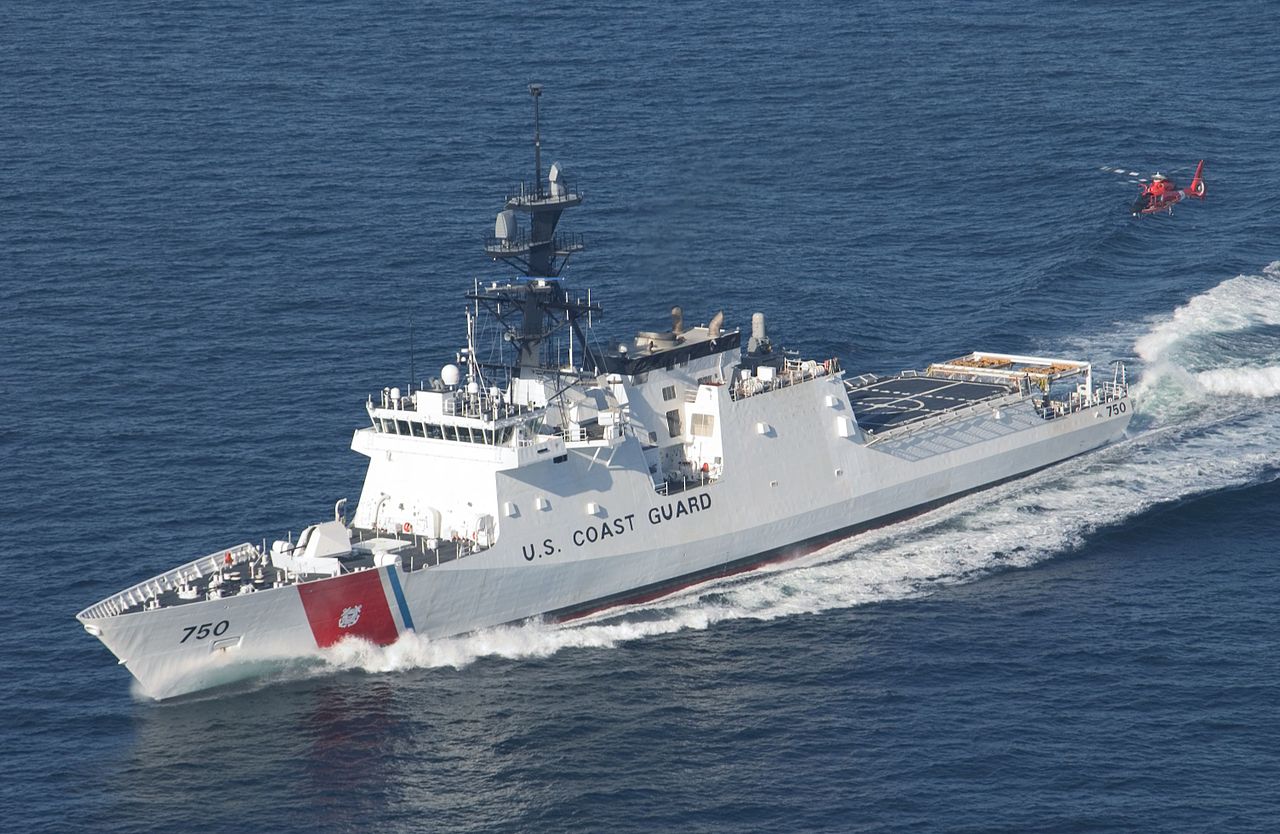
Cutter Bertholf displays her "racing stripe"
In 1967, the Coast Guard was transferred from the Treasury to the newly-established Department of Transportation, even as its personnel and cutters were supporting the war in Vietnam. It was at this point that the distinctive paint scheme of white hull and red and blue "racing stripe" was adopted. The second half of the 20th century saw increased attention to environmental protection, the responsibility of monitoring America's EEZ and a return to the anti-smuggling mission as drug imports rose. In 2002, the Coast Guard was moved to the Department of Homeland Security, and it has supported the War on Terror just like it has every war since its founding.
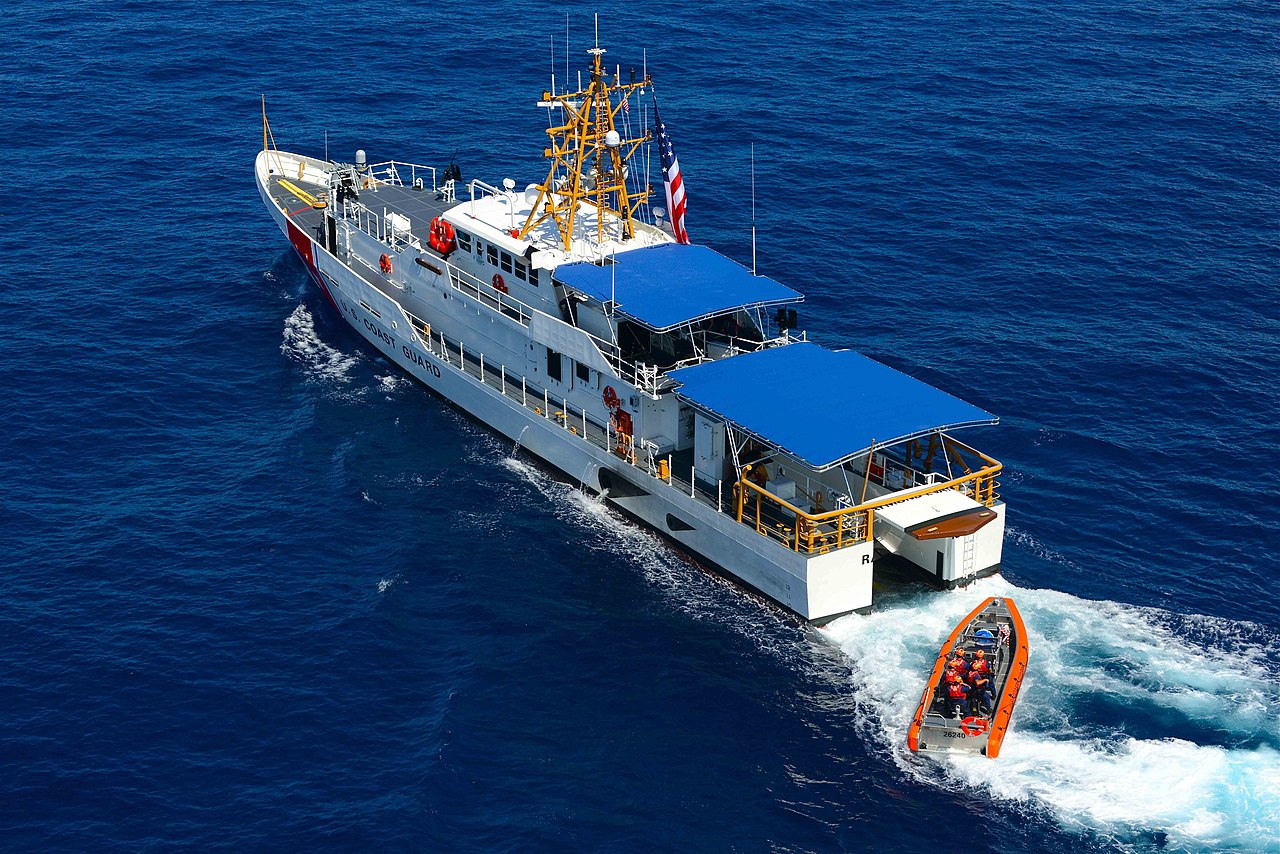
Sentinel class cutter Raymond Evans deploys a boat from her stern ram
The majority of the Coast Guard's strength is focused on performing its day-to-day missions in and around the United States, with an array of equipment whose diversity matches that of its missions. Work in the open ocean is the task of the bigger cutters, particularly those of the Legend, Famous and Reliance classes. These are big ships, all over 1000 tons, and capable of staying on patrol for weeks. Major missions include hunting drug smugglers, enforcing US fishing laws, rescuing distressed mariners, dealing with pollution and generally making sure that nobody is up to anything nefarious in American waters. Smaller cutters, such as the Sentinel, Island and Marine Protector classes, deal with problems closer inshore, conducting patrols measured in hours or days instead of weeks.
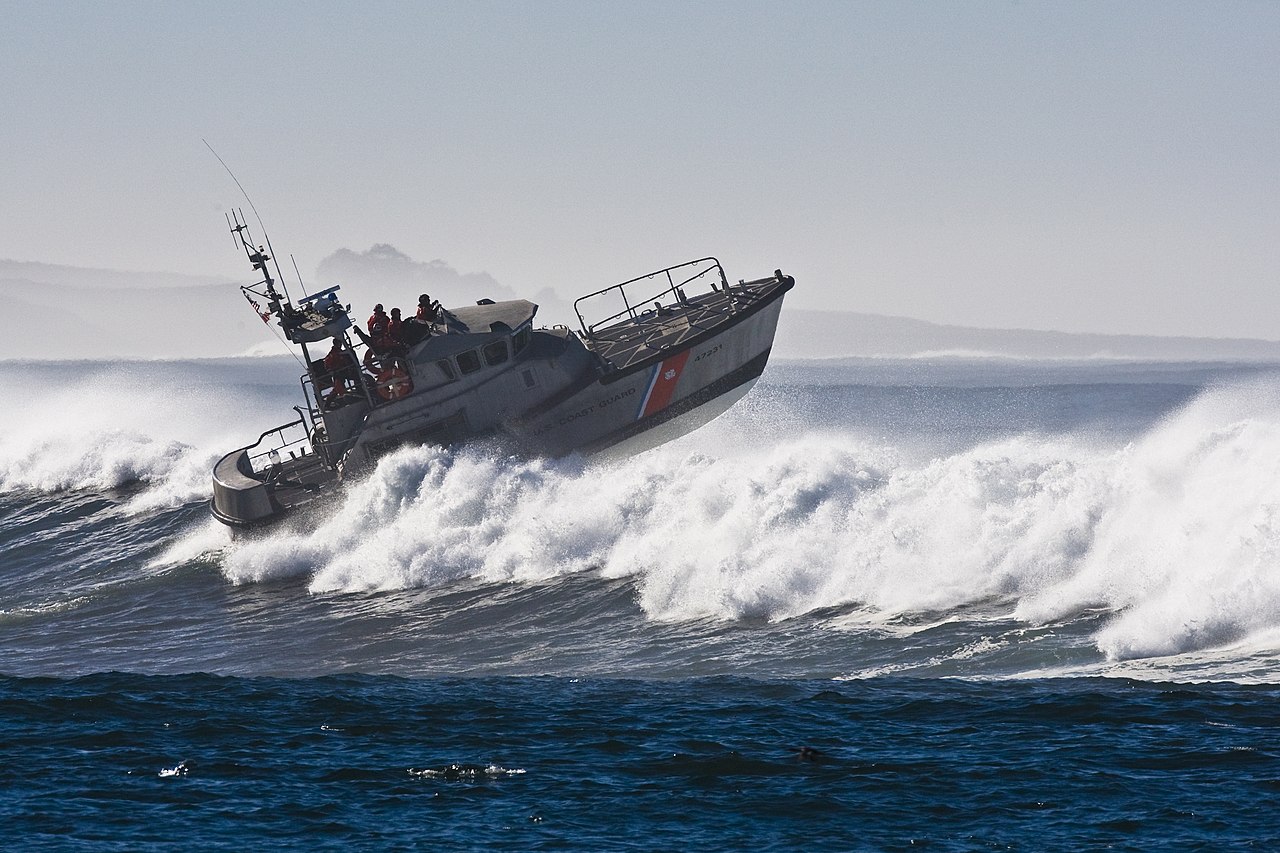
A 47' Lifeboat in the surf
Port security is a major mission of the Coast Guard, although this work is usually carried out by boats under 65', such as the Defender class and Response Boat - Medium. Also numerous are the Motor Lifeboats, which are designed to perform rescues in even the worst weather, and have a secondary law-enforcement/security mission. Small boats are also carried by most of the cutters, allowing them to move boarding parties around and chase down drug runners.
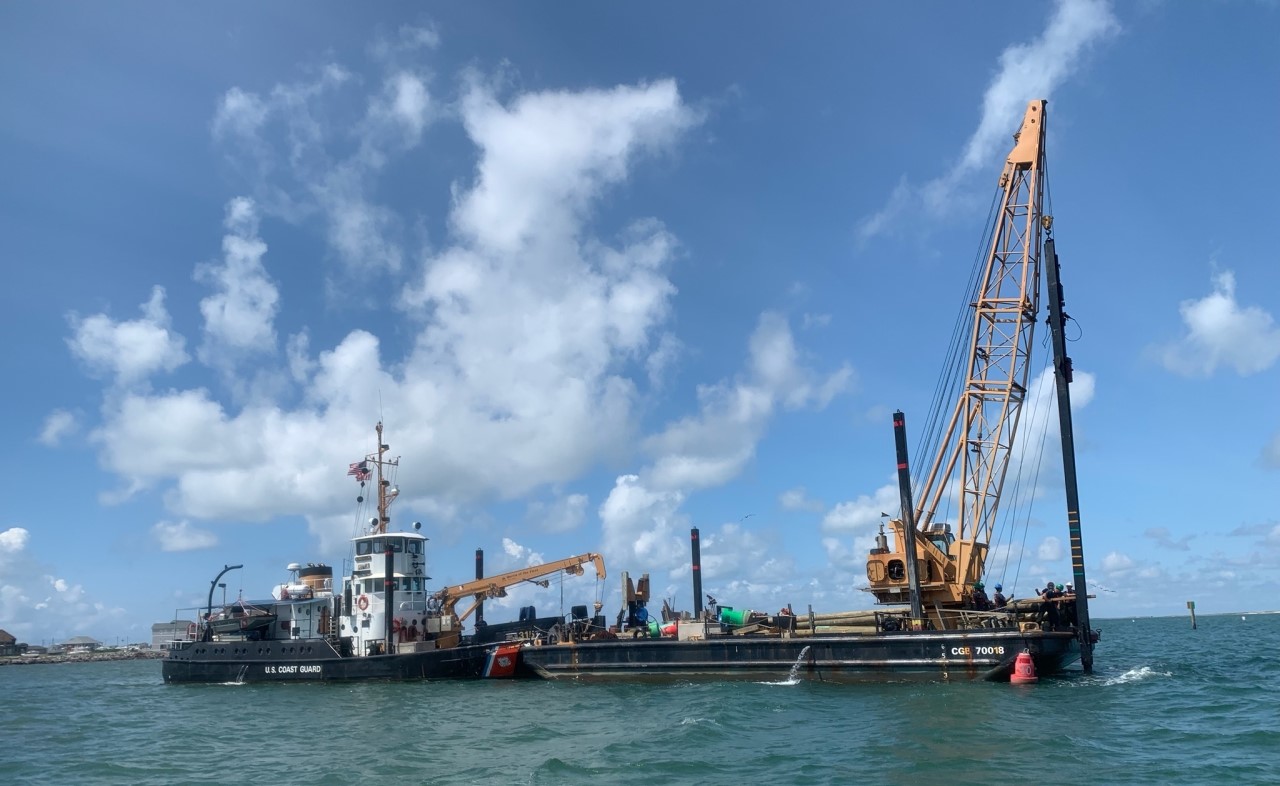
Smilax servicing navigation aids at age 75
But not all Coast Guard vessels are charged with policing and lifesaving. The biggest of the other missions is "Aids to Navigation", the maintenance of buoys, lighthouses and other devices intended to make it easier for mariners to avoid having to avail themselves of the Coast Guard's rescue services. These range in size from large seagoing buoy tenders to inland buoy tenders and even ships and boats that operate on rivers like the Mississippi, Missouri, Ohio and Columbia. Second to Aids to Navigation is icebreaking, a mission carried out on the Great Lakes and in the northeast by a variety of tugboats and dedicated icebreakers to keep channels open for shipping. But the Coast Guard also operates three oceangoing icebreakers, USCGC Healy and the two ships of the Polar class. Besides their normal law-enforcement and security mission, they also support scientific work both in the Arctic and the Antarctic. Lastly, the Coast Guard also operates the US Government's only operational sailing ship, USCGC Eagle. Originally built by Nazi Germany, she was taken over as a war prize and continues to serve as a training ship for the Coast Guard Academy today.
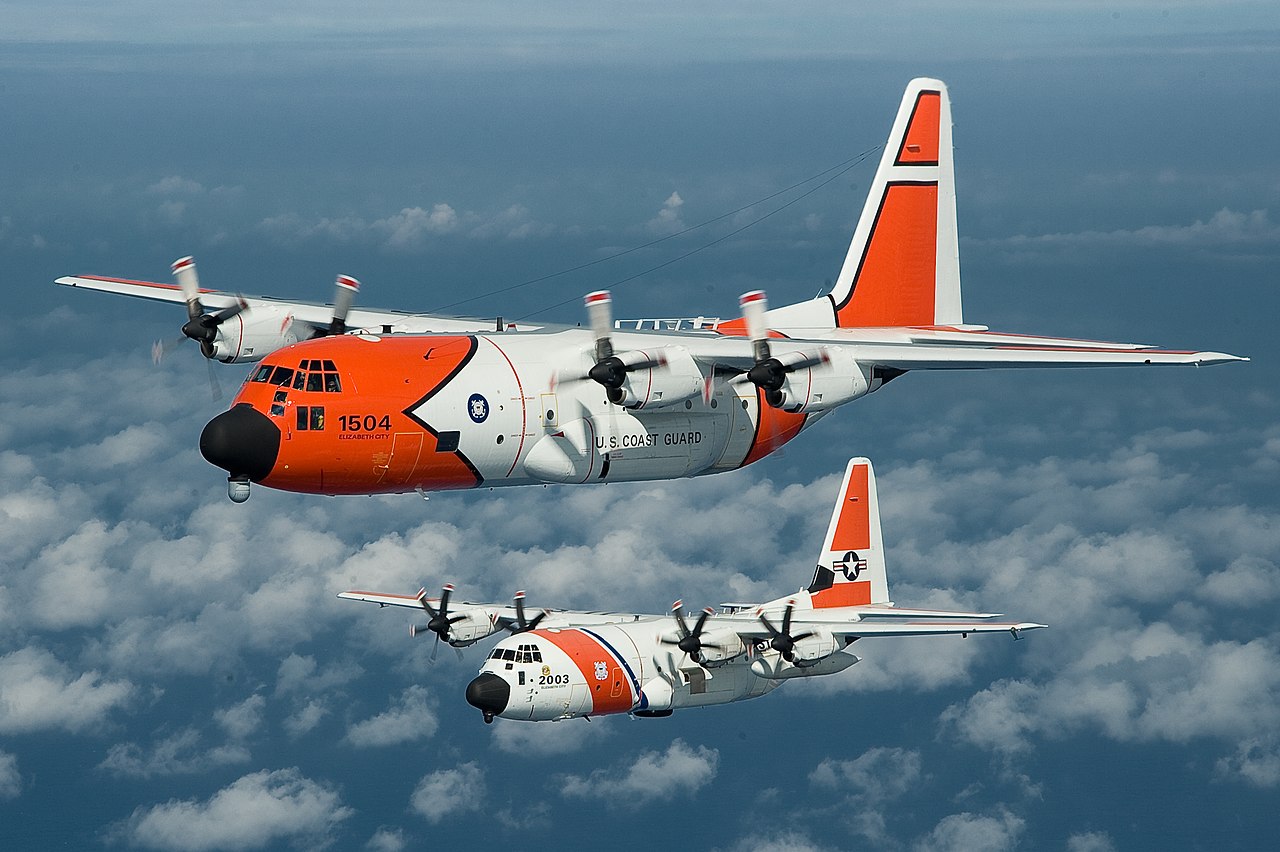
Two HC-130s in flight
The Coast Guard's surface vessels are backed up by a large air component. The fixed-wing force, a mix of HC-130s, HC-27s and HC-144s, is primarily tasked with long-range patrol and search-and-rescue missions, while shorter-range work is the responsibility of MH-65 Dolphin and MH-60 Jayhawk helicopters. Besides picking survivors out of the water, these often serve aboard the larger cutters, carrying inspection teams and evacuating sick people from ships. The fixed-wing aircraft also work on the International Ice Patrol, which has spent over a century patrolling the North Atlantic to catch icebergs since a famous maritime disaster raised awareness of the threat.
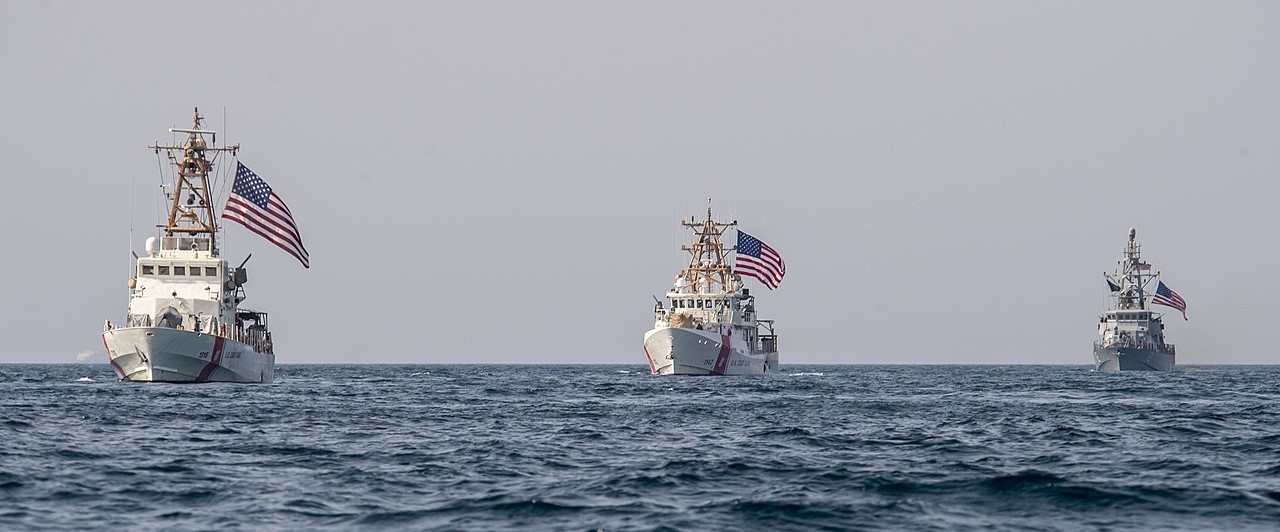
Two cutters and a USN patrol boat in the Persian Gulf
Despite its name, the Coast Guard's duties are not limited to the American coast. Stations in Japan and the Netherlands support ship inspections and port security worldwide, while Patrol Forces Southwest Asia, based in Bahrain, has 6 cutters that help to secure the vital waterways of the Persian Gulf under the command of the Navy's Fifth Fleet. The Coast Guard also assists the Navy by providing law enforcement teams aboard Navy vessels, providing a capability for ship boarding and inspection that the Navy generally lacks. Also usually assigned to the DOD are the Port Security Units, specialists in protecting port facilities worldwide. Both are among the Coast Guard's Deployable Specialized Forces, which also include the counter-terrorism Maritime Safety and Security Teams, which help secure American ports, and the National Strike Force, a far more exciting name than the team responsible for coordinating cleanup of oil spills and other pollution probably deserves.
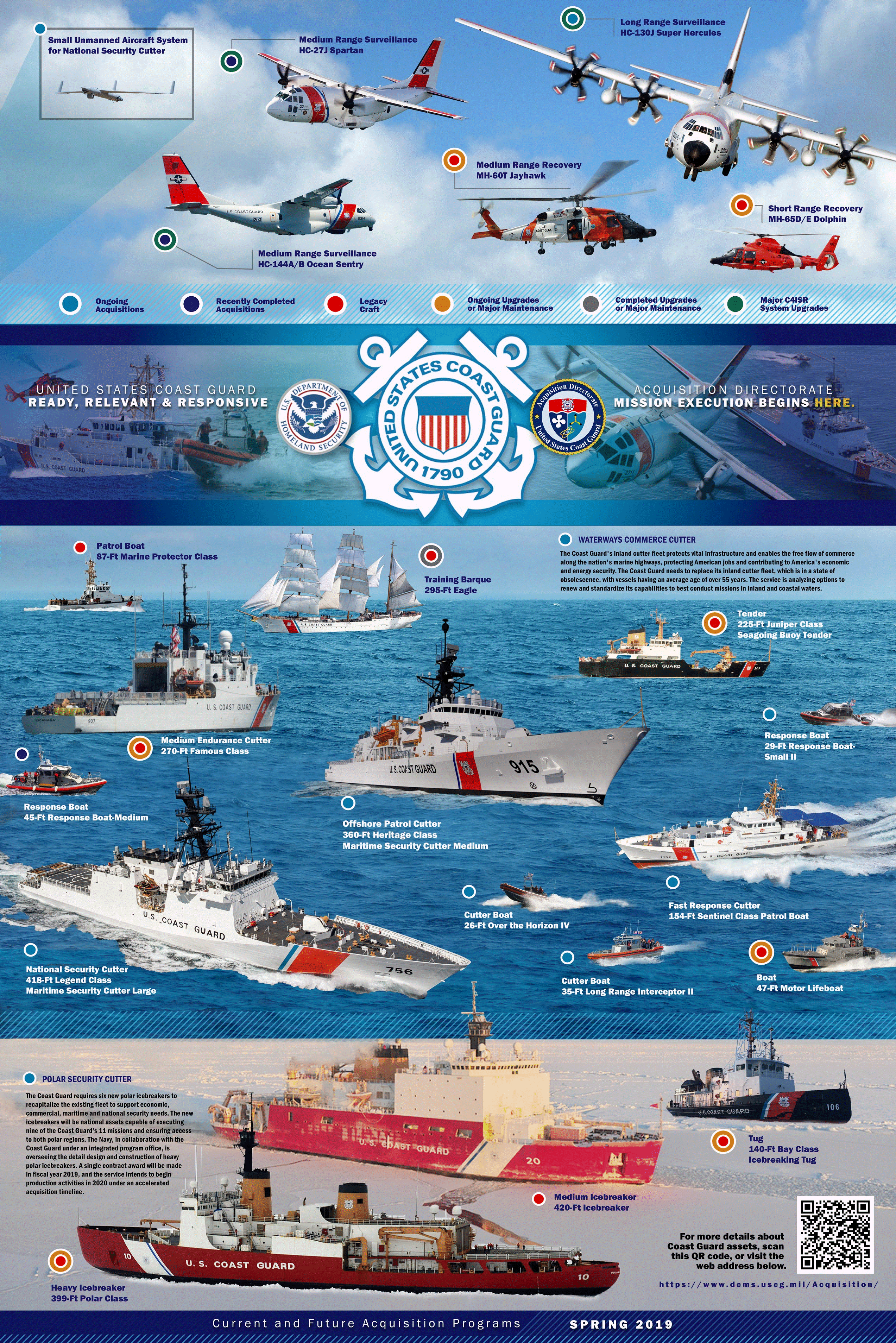
A graphic of most of the Coast Guard's systems. Click to expand.
The Coast Guard is also unusual in that it is the only one of the Armed Services with an active auxiliary. The 24,000-strong Coast Guard Auxiliary aids in all missions that don't involve direct defense and law enforcement, helping this most diverse service keep America's maritime frontiers safe, a mission it accomplishes against threats ranging from drug smugglers to drunk boaters to oil spills.
1 Note that there are two other uniformed services that aren't armed, the Public Health Service Commissioned Corps and the NOAA Commissioned Corps. ⇑
2 I haven't run down the details of this claim, which is going to depend on exactly what gets counted. But it's definitely in that ballpark. ⇑
3 Any Coast Guard vessel over 65' is considered a cutter. ⇑

Comments
When the Air Force decided to retire the Spartans all the other service started doing somersaults of joy, and went shopping at Davis Mothan...
Emilio:
Which has exactly what to do with this post?
The HC-27s were originally Air Force planes. That said, I'm not sure how much enthusiasm there was for the planes. I looked into this at one point, and nobody seemed all that interested in putting them to use.
Slightly off at a tangent here - the UK maritime security services are structured very differently. Coastguard, lifeboats and fishery protection are separate services. The latter part of the navy, the other two non-military.
But your lifeboat picture reminded me of how deeply service to those in peril on the sea is embedded in the culture of coastal towns & villages. My parents used to take me on summer holidays to a little town on the coast of Norfolk (UK). The lifeboat house was one of the most prominent buildings, and the coxswain (de facto captain) of the lifeboat one of the most respected people in the town.
It's changed a lot now - much of the property has been bought up as expensive second homes and vacation rentals. But I just did a quick google, and the current coxswain is also chair of the town council - and the great grandson of one of the only two survivors of a disaster in 1880 where the lifeboat sank on a rescue attempt.
Wiki has a global overview. (Of unknown accuracy.)
Which has sometimes meant sending actual frigates into ramming fights over fish.
Writing this was interesting because it revealed just how unnatural the structure of the Coast Guard was. Why does the same organization handle harbor security, fishery protection, search-and-rescue, fighting drug smuggling and dealing with oil spills? Each of those could quite straightforwardly be under a different command.
@muddywaters
I keep meaning to write about the Cod War.
Is the C-27 literally just a baby C-130?
Literally? No. It's a different aircraft, derived from an old Italian airlifter. In practical terms? Yeah, pretty much. They seem to have been procured by the Coast Guard at the cost of some of their HC-144 buy.
I would have expected that "law enforcement teams aboard Navy vessels, providing a capability for ship boarding and inspection" a.k.a. marines would -- if not integral to the navy -- be provided by the Marine Corps.
And if that had become a major role in the early 20th century, they undoubtedly would have. As it is, the Marines strongly prefer to play in bigger units, so they let the Coast Guard have the job.
"Why does the same organization handle harbor security, fishery protection, search-and-rescue, fighting drug smuggling and dealing with oil spills? Each of those could quite straightforwardly be under a different command."
Each of them could be done under a different command, but many of them benefit from joint command. Sometimes for synergy of equipment; a small fast seaworthy boat with a crew of expert mariners is good for search and rescue, and good for fighting drug smugglers, and neither of those requires enough specialized kit or skills to monopolize a boat or crew. And sometimes for synergy of expertise - a buoy tender is too specialized to be used for much else, but figuring out what sort of navigational aids to place where to best minimize shipwrecks calls for people with a great professional knowledge of shipwrecks, and you've already got that in your search-and-rescue force.
And, path dependence. Not all of these missions arose at the same time, e.g. harbor security wasn't a big deal until 2001. So if you've got a new (and thus still small) mission, and your choices are to stand up a whole new force to carry it out or just marginally expand a force that was already doing something reasonably similar, plan B is probably going to win.
The big deal is probably merging search & rescue with smuggler-chasing. Once you've got those combined, everything else follows pretty naturally. Some nations do keep those separate; the US doesn't.
Regarding the Marine question, I suspect that it might be simpler to have the CG doing certain jobs because they operate under a different juris diction.
Oh, I'm not saying it's not a structure that makes sense. The US basically decided to have a second maritime force which does everything except fighting other miliaries, stemming from the joining of the lifesaving and revenue functions. And there's a lot of sense in that, to the point that I came out in favor of a unified Coast Guard during the Build a Modern Navy series. But it could equally have been the case that the roles get carved up, particularly if that unification never happens. Then you end up with drug-smuggling being the rump Coast Guard, fishery protection under the USDA, oil spills under the Department of the Interior and harbor protection being a matter for either the local police or the FBI.
the coast guard is not unique. it's special.
@bean
you undersell the story of the HC-27! Congress, in its infinite wisdom, made the Air Force buy C-27s but gave them no money to operate them and the air force had no use for them. So the brand new aircraft were dumped straight into the boneyard. It took a couple years until someone figured out "oh, hey the coast guard is buying brand new HC-144s, maybe they could use the C-27s"
I'd heard the coast guard kept their depth charges until around the end of the cold war, but not that the Hamilton class actually got Harpoons under the Reagan buildup. (Did they actually have the ability to target them, or network with ships that could?)
It always seemed like the modular system concept makes by far the most sense for the coast guard.
They usually don't need serious armament to chase down Mexican drug subs, but when they get sent to do wartime patrols in the Persian Gulf it'd be really nice to slap on some SeaRAM launchers.
Good to see the site back up. It was down for a few hours there, and comments still seem broken.
I did a stint at the USCG Telecom & IS Command back in my youth. The other thing to remember about Coasties is every one of them goes to sea (and has the sea stories to prove it)
Oh, hey, that reminds me. I keep getting conflicting info on why NOAA and Public Health are uniformed services. You got any more info to conflict with what I've got?
@Ian Argent: for NOAA, see the article.
@Echo: it was also down here, but seems to be working now. (If you spend a long time writing a comment, you may get a confusingly-worded error. This has been the case for some time and means the captcha code has changed; the comment should still be in the comment box and only require entering the now code.)
@Echo
If they kept their depth charges, then it was only on very small boats, probably for anti-swimmer work. My early-80s Ships and Aircraft of the US Fleet lists ASW weapons as "removed" everywhere except the Hamilton class, which had triple tubes for Mk 46.
Modular doesn't really work that way. You need training time for the weapons. But yeah, it would be nice to be able to build a single cutter that we could fit with SeaRAM for the Gulf and a sonar for hunting drug subs. (I'd bet that the engines on those put out a lot of sound into the water.)
Pretty sure the outage was on the host's end given that DSL was also down. Not much I can do about that.
I am probably missing something (and tired), but that sounds like overkill. Surely if you needed to ruin some swimmers' day, light machine guns would be sufficient.
Water is extraordinarily effective at stopping bullets. Even a few feet is plenty. (Mythbusters tested this, and I suspect you can find the video online.) But water is also very good at transmitting shocks, so the best way to deal with scuba divers and the like is to use what are essentially small depth charges, generally not much more powerful than a hand grenade.
I guess that I was thinking of goose-fat covered middle-aged Englishmen, when you said swimmers.